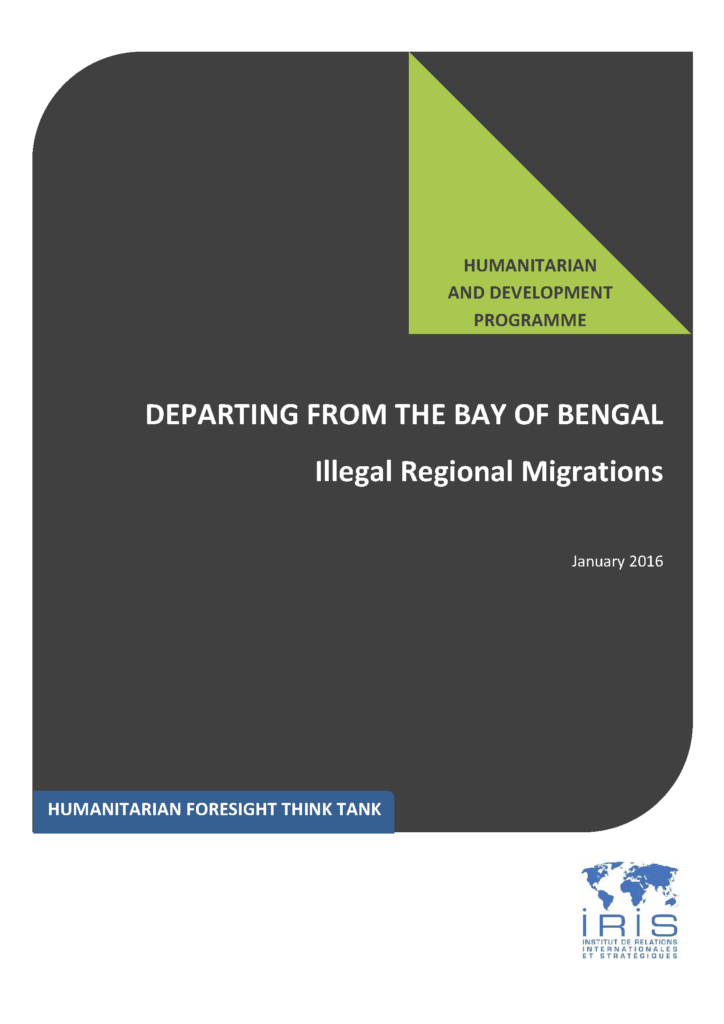Notes / Sécurité humaine
15 janvier 2016
Departing from the Bay of Bengal: Illegal Regional Migrations

In 2015, several abandoned boats drifted away in the waters of Southeast Asia with on board some 5000 persons, men, women and children mainly of marginalized ethnic minorities fleeing Myanmar1. Though this tragedy attracted global attention, no significant progress has been made since then to ameliorate the situation of Asia’s illegal migrants leaving the Bay of Bengal.
Illegal migrations in SE Asia have a seasonal pattern, and the sailing season usually peaks between October and March every year. So far, very little activity has been reported on the usual migration routes: seven boats carrying about 1,500 people in total have been tracked from 20 September to 31 December, which is far less than last year numbers. At this stage, factors of change can only be hypothetical, and the journey certainly remains one of the deadliest towards a better life.
A few elements can, however, be pinpointed as explanatory dimensions of what seems to be reduced flows of illegal migrations in the area. Growing control over the Thai land borders and increasingly dissuasive methods employed in Malaysia to make the country unappealing to migrants are likely to be two major deterrent factors. The media coverage of both trends and improved communication networks could play a determinant role, while the migrant population has been reported weighting the considerations of the risks of the trip against the chance of reaching higher standard of living. The political transition in the main source country, Myanmar, which is another potential factor, should be considered with the greatest prudence, together with the fact that less visible, countable migrations do not necessarily mean less migration.
